Buy Super Smash Bros. Ultimate
Smash Bros. feels like a made-up story: a fighting game featuring some of the biggest names in gaming beating the living crud out of one another. However, the latest entry in the franchise, Smash Bros. Ultimate, lives up to its name. This is the most fully featured Smash game to date, instead of a repackaging of older games.
SSBU's roster includes pretty much every single character who has ever appeared in a Smash Bros. game, as well as a small selection of new fighters. Not every fighter is unique, though. Previous Smash titles have had clone characters — defined as "Echo Fighters" — who played very similar to other characters. These characters represent a hefty chunk of the cast, including newcomers like Daisy, Dark Samus, Ken Masters, and Simon Belmont. There are plenty of solid and enjoyable new characters, like King K. Rool from Donkey Kong Country and Incineroar from the latest Pokémon games.
The cast includes Japanese gaming greats, such as almost every Nintendo character of note and a hefty selection of third-party characters, like Bayonetta, the aforementioned Belmont, Cloud Strife, Ryu, Solid Snake, and Sonic the Hedgehog. In short, it's a roster that you'd imagine kids making up on the playground in the '90s — and that's entirely in the game's favor. Sure, there are a lot of similar characters (no fewer than three versions of Link from Zelda and more Fire Emblem characters than you can shake a stick at), but it means everyone is going to find someone they want to play.
The core SSBU gameplay hasn't changed much. For those who've never played other games in the series, players are thrown into 2D fighting arenas and forced to fight. Unlike most fighting games, you don't win by reducing your opponent's HP. Instead, damaging them causes their damage percentage to rise. The higher it rises, the easier it is to knock that character around, and you win by knocking your opponent off the side of the screen. Combat only consists of two attack buttons (regular and special), which are modified by the direction you're pressing when you hit them.
Don't mistake that for SSBU being a simple game, though, because it's surprisingly complex for its kid-friendly veneer. Every character plays differently and has strengths and weaknesses. Some fight best from a distance, others are great at tanking attacks, and others are fast and rely on piling up tons of little hits before they hit you with a single attack. The different maps also have different obstacles, including environmental hazards, shifting platforms, and the occasional boss monster. Special items also appear randomly, and they can do anything from creating a giant laser cannon to healing your damage.
It's easy to imagine SSBU being a mainstay of parties for a long time since it's so customizable. The game works well because you can play it however you like. If you want a simple battlefield so battles are a test of pure skill, that is available. There are some new options to make the game more of a traditional fighter. Stamina matches have always been available, but they're emphasized in Ultimate. They do away with damage percentage in favor of a more traditional HP-based combat system. Final Smashes, which are super moves normally acquired from a random item, can be changed to charge up over time, like super meters in other games. If you get bored, there are over 70 other characters and countless other game modes to play.
The World of Light is the primary single player-mode. In essence, it's a beefed-up version of the "themed challenges" in older Smash games. You're thrown onto a giant world map with countless squares, each of which houses a spirit. Each spirit inhabits the body of one of the primary fighters, and you take them on in a special fight based on that spirit. Some of the skirmishes are amusing, such as Earthbound's Buzz Buzz being represented by a tiny Game & Watch, who dies in a single hit. Others are genuinely brutal fights, such as a timed fight against Zero Suit Samus in a field of poison to mimic the final battle of Metal Gear Solid 3. From time to time, you'll even fight bosses, such as Ganon, Marx, or even Monster Hunter's Rathalos. The boss fights are rather fun because they closely mimic the boss fights from their source games.
You have some advantages on your side. You begin with Kirby but quickly unlock more characters by finding them on the map. This allows you to unlock them both in The World of Light and also in the rest of the game, making it one of the faster ways to unlock some characters. Once a character is unlocked, you can also equip them with spirits that you've rescued from the world map. There are two types of spirits: primary and support. Primary spirits represent the main stats of your character and power them up, and secondary spirits allow you to add passive buffs to your character, such as extra defense, starting with certain items, or special effects, like healing from poison damage. The number of support spirits you can equip is determined by the number of slots a spirit has. You also have a skill tree, where you can unlock permanent versions of various spirit skills, including absurd things like double Final Smashes.
All in all, World of Light is a pretty fun but unexceptional single-player mode. It gets a bit repetitive, but there are just enough moments of enjoyment to eclipse the down sides. In particular, I loved the special stages. One was a full-on remake of the first stage of Donkey Kong Country, and another had you facing Street Fighter-themed opponents, complete with Stamina matches. My personal favorite was Dracula's Castle, which has a lengthy semi-puzzle dungeon with a number of secrets. If the game had been more like that, it would've been a delight.
SSBU has a fair number of other bonus modes. There are various challenges, such as fighting 100 enemies in a row or fighting every character in the game. There's also Classic mode, which is my favorite single-player option. Every character has a themed multi-stage mode they fight through. They have no plots, but some are truly funny or amusing. Sonic the Hedgehog has stages based on cheesy rock songs from the Dreamcast era, while Richter battles Echo fighters.
There are also multiplayer fights, including online fights against other players. The online fights are a mixed bag. If you're fighting against people with good connections, they work well. If you're not, then they're slow, laggy and borderline unplayable. Random fights seemed the worst for me and rarely ended well, while fights against friends went smoother. I'm not sure if that was due to distance or some other factor, but if you're hoping for Ultimate online, beware that it can be a crapshoot. The local multiplayer is fantastic, and the ability to play the game in handheld mode makes quick matches with friends wonderfully easy to set up.
SSBU is a beautiful-looking game. All the characters and environments are presented in exacting detail, and there are so many surprising features. It looks phenomenal in motion and is a huge improvement over the odd models from Smash 4. Considering the stages come from as far back as the N64, it's wonderful to see how well they've updated those levels. The only complaint I have is that the user interface isn't always user-friendly, and in handheld mode, it can be tough to see things on the larger stages. Those are minor complaints that don't detract from the experience.
SSBU has one of the best soundtracks in all of gaming. It's almost unfair to say that, since this title is in many ways a "best of" collection of some of the music, but with over 800 songs to choose from, this is both quantity and quality. More to the point, the game also contains remixes of a number of songs, and that is what really makes the soundtrack shine. The remixes elevate some already great songs to new heights. The remix of King K. Rool's "Gangplank Galleon" is absolutely mind-blowing, as are the fantastic remakes of songs from Castlevania, Mega Man and countless others. I'd almost say Ultimate is worth it just for the soundtrack, which includes a "music player" feature for those who want to use it.
Super Smash Bros. Ultimate lives up to the name because it's the best Smash game to date. The absurd character roster, immense amount of content, and general amazing gameplay make it fun in a way that's tough to beat. There are minor quibbles here and there, and the poor online component is a genuine black mark on the rest of the game. Still, Ultimate is a joy to play and a must-buy for anyone who has ever enjoyed smashing some bros. Even considering the Switch's amazing lineup, Smash Ultimate is one of the best the system has to offer.
Score: 9.5/10
More articles about Super Smash Bros. Ultimate


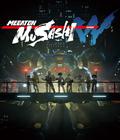
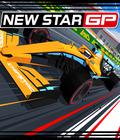


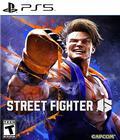

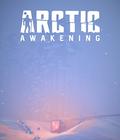


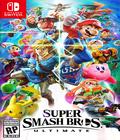 Super Smash Bros. Ultimate lets up to eight players square off in action-packed battles that are all about smashing beloved video game characters off the screen.
Super Smash Bros. Ultimate lets up to eight players square off in action-packed battles that are all about smashing beloved video game characters off the screen. 












































